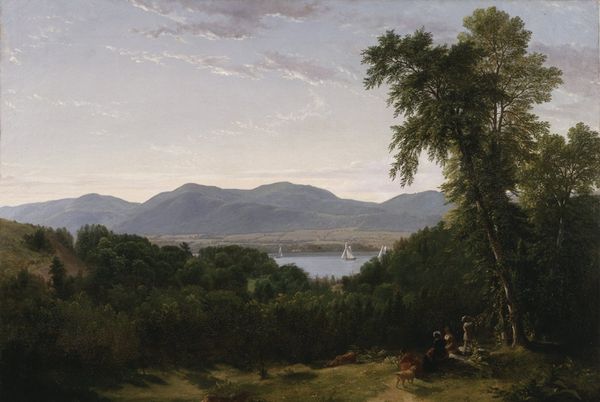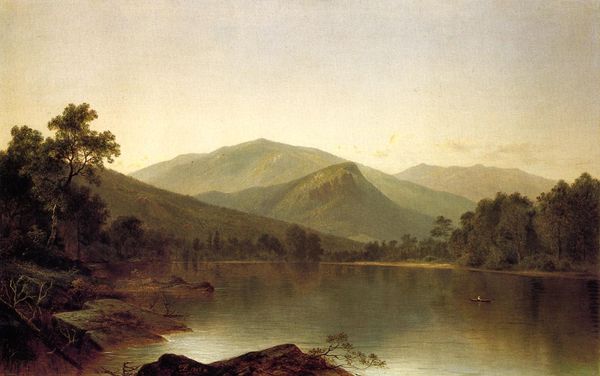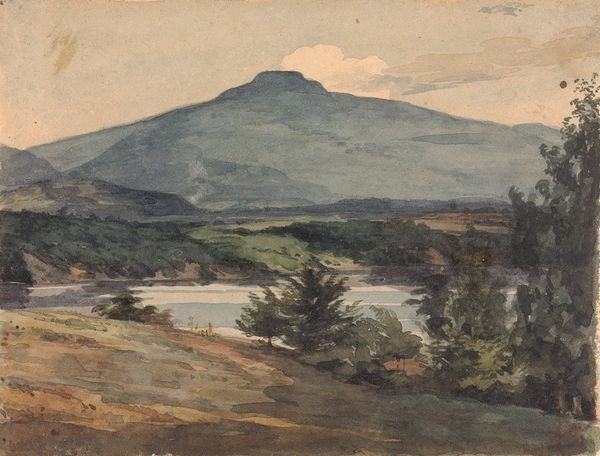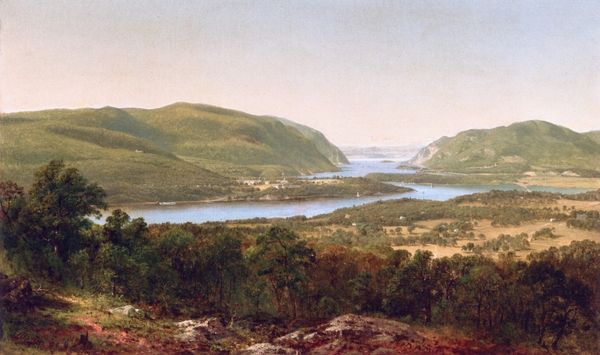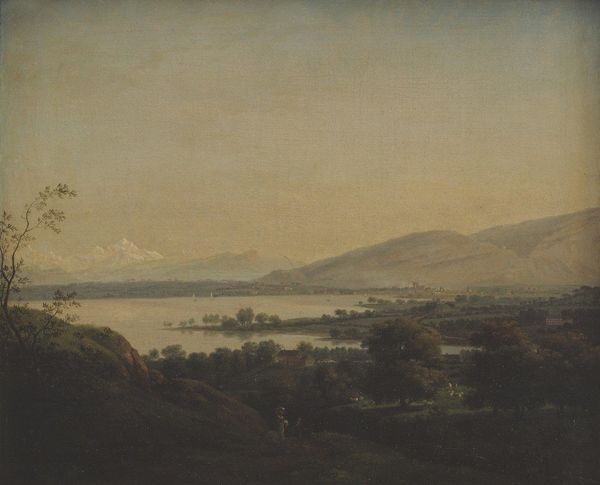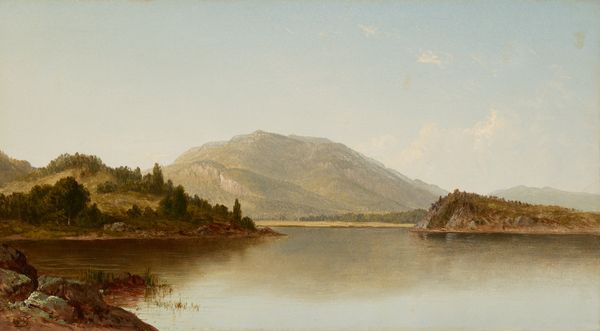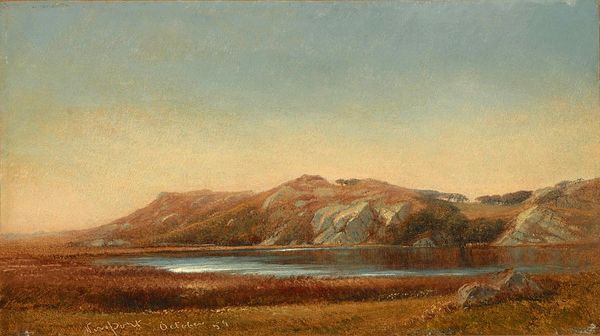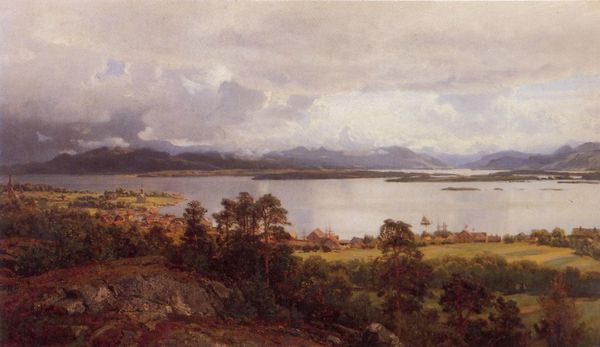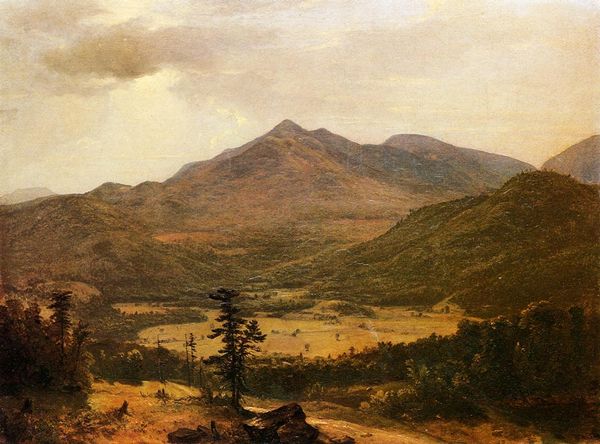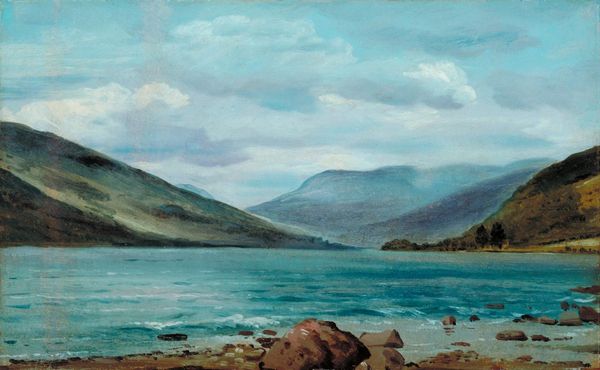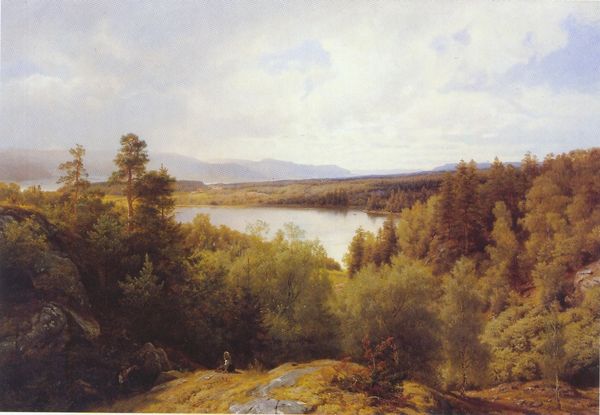
painting, plein-air, oil-paint
#
lake
#
painting
#
countryside
#
plein-air
#
oil-paint
#
landscape
#
oil painting
#
natural-landscape
#
hudson-river-school
#
nature
#
realism
Copyright: Public domain
Asher Brown Durand painted "Lake George" as part of the Hudson River School, a mid-19th century American art movement. These artists were bound by a romanticized vision of nature, in a rapidly industrializing nation, that often overlooked the complicated histories of settlement. Durand, like many of his contemporaries, was deeply influenced by the philosophy of transcendentalism, which emphasized the inherent goodness of people and nature. Yet, Lake George also has a history as a contested site during the French and Indian War and the American Revolutionary War. This tension between an idealized landscape and the history of conflict marks a key part of American identity. Durand’s choice to focus on the serene, untouched beauty of the lake effectively erases those histories, presenting a narrative of peaceful coexistence. By engaging with Durand’s painting, we might reflect on the stories we choose to tell ourselves about the land we inhabit. What does it mean to remember—or forget—the difficult and violent histories embedded in the American landscape?
Comments
No comments
Be the first to comment and join the conversation on the ultimate creative platform.
